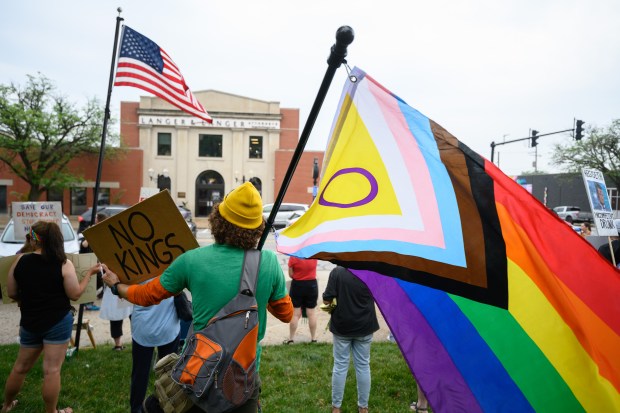Many small ornamental trees brighten the Chicago region with their spring blooms: redbuds, crabapples, serviceberries, magnolias, wild plums and many more. Cherries, not so much.
The Japanese cherry trees (Prunus serrulata) that bloom in a cloud of pink in Tokyo and Washington, D.C., rarely thrive in this area, according to Sharon Yiesla, plant knowledge specialist in the Plant Clinic at The Morton Arboretum.
One problem is the Chicago climate, which is more challenging than the milder conditions of Japan and the U.S. Southeast. “Some cultivated varieties of Japanese cherries are said to be hardy in Zone 5, but the wild swings of weather we get in spring tend to be too much for them,” she said. “They’re also very susceptible to winter damage.”
Japanese cherries are prone to disease, including a fungal infection called black knot. “It’s almost impossible to control,” Yiesla said. “The only thing you can do is prune out the infected branches every winter.” Other pests and diseases that afflict Japanese cherries include powdery mildew, borers, mites and tent caterpillars.
“A Japanese cherry tree in the Chicago area is likely to be high-maintenance and short-lived,” she said.
Another popular but troubled tree is Higan cherry (Prunus subhirtella), often sold in a weeping form. Like the Japanese flowering cherry, it is a short-lived tree that is susceptible to many insects and diseases when stressed.
With so many other flowering trees to choose from, it’s easy to find one that would be a better bet. For example, redbud (Cercis canadansis) is a native tree that is robust and lovely, with lavender-pink flowers that bloom along its dark branches. Several species of white-flowering serviceberry, including the Chicago-area native downy serviceberry (Amelanchier arborea), thrive in local landscapes.
What if you have your heart absolutely set on a cherry? All hope is not lost.
Sargent’s cherry (Prunus sargentii) is more winter-hardy and adaptable than Japanese flowering cherry or Higan cherry. It grows in several places at the Arboretum, among the heart-lifting displays of crabapple trees and magnolias. Sargent’s cherry has showy pink flowers in early spring and attractive, shiny brown bark. Like most trees with conspicuous spring flowers, it needs a full-sun site.
“It’s not immune to all the ills of cherry trees, but Sargent’s cherry does better here than most other species,” Yiesla said.
The Plant Clinic (mortonarb.org/plant-clinic) can suggest other kinds of small spring-blooming trees that are well suited to this region. “There’s a flowering tree for every yard,” she said.
For tree and plant advice, contact the Plant Clinic at The Morton Arboretum (630-719-2424,
mortonarb.org/plant-clinic, or plantclinic@mortonarb.org). Beth Botts is a staff writer at the Arboretum.



